
William Walker was an American physician, lawyer, journalist, and mercenary. In the era of the expansion of the United States, driven by the doctrine of "manifest destiny", Walker organized unauthorized military expeditions into Mexico and Central America with the intention of establishing slaveholding colonies. Such an enterprise was known at the time as "filibustering".
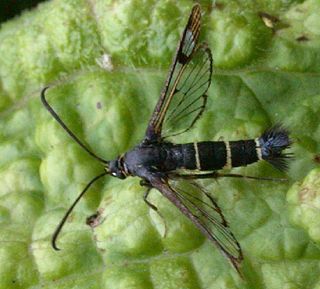
The Sesiidae or clearwing moths are a diurnal moth family in the order Lepidoptera known for their Batesian mimicry in both appearance and behaviour of various Hymenoptera.
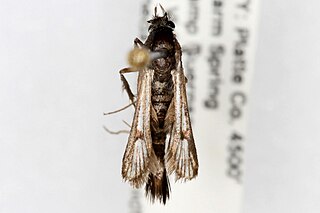
Carmenta is a genus of moths in the family Sesiidae.

The Hepialidae are a family of insects in the lepidopteran order. Moths of this family are often referred to as swift moths or ghost moths.

Francis Walker was an English entomologist. He was born in Southgate, London, on 31 July 1809 and died at Wanstead, England on 5 October 1874. He was one of the most prolific authors in entomology, and stirred controversy during his later life as his publications resulted in a huge number of junior synonyms. However, his assiduous work on the collections of the British Museum had great significance.
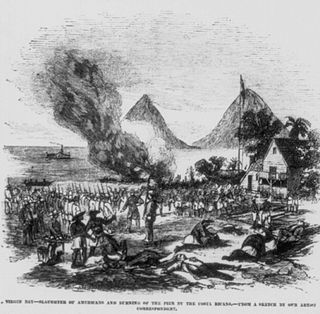
The Filibuster War or Walker affair was a military conflict between filibustering multinational troops stationed in Nicaragua and a coalition of Central American armies. An American mercenary, William Walker, invaded Nicaragua in 1855 with a small private army. He seized control of the country by 1856, but was ousted the following year.
Northumberland and Hunter was an electoral district for the Legislative Assembly in the Australian state of New South Wales from 1856 to 1859, in the Newcastle area and named after Northumberland County and the Hunter River. It elected three members, with voters casting three votes and the first three candidates being elected. For the 1859 election it was replaced by Northumberland and the remainder was divided between Hunter and Lower Hunter.
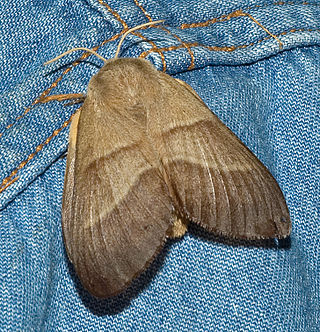
The Lasiocampinae are a subfamily of the moth family Lasiocampidae. The subfamily was described by Thaddeus William Harris in 1841.

Cosmosoma is a genus of tiger moths in the subfamily Arctiinae. The genus was erected by Jacob Hübner in 1823.

Procridinae is a subfamily of the family Zygaenidae.

Smerinthini is a tribe of moths of the family Sphingidae. The genus was erected by Augustus Radcliffe Grote and Herbert C. Robinson in 1865.
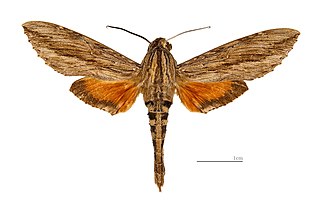
Dilophonotini is a tribe of moths of the family Sphingidae described by Hermann Burmeister in 1878.
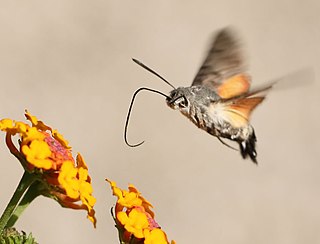
Macroglossini is a tribe of moths of the family Sphingidae described by Thaddeus William Harris in 1839.

Temnora is a genus of moths in the family Sphingidae.

Macroglossum is a genus of moths in the family Sphingidae. The genus was erected by Giovanni Antonio Scopoli in 1777.

Synanthedon is a genus of moths in the family Sesiidae.

The 1856 United States House of Representatives election in Florida was held on Monday, October 6, 1856 to elect the single United States Representative from the state of Florida, one from the state's single at-large congressional district, to represent Florida in the 35th Congress. The election coincided with the elections of other offices, including the presidential election, the senatorial election, the gubernatorial election, and various state and local elections.
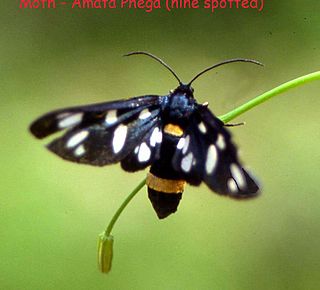
The Syntomini are a tribe of moths in the family Erebidae. The tribe was erected by Gottlieb August Wilhelm Herrich-Schäffer in 1846.

The 1856 Florida gubernatorial election was held on October 6, 1856. Democratic Nominee Madison S. Perry defeated Know Nothing candidate David S. Walker.


















